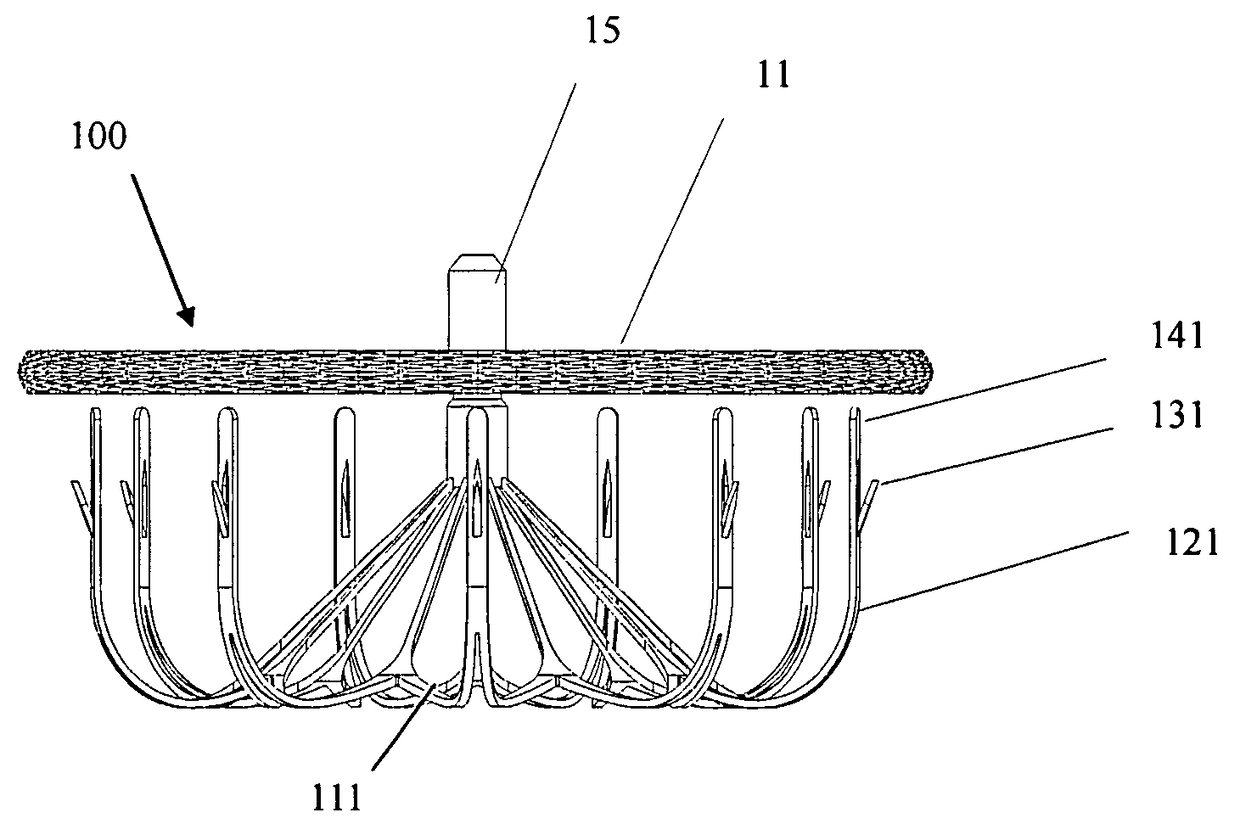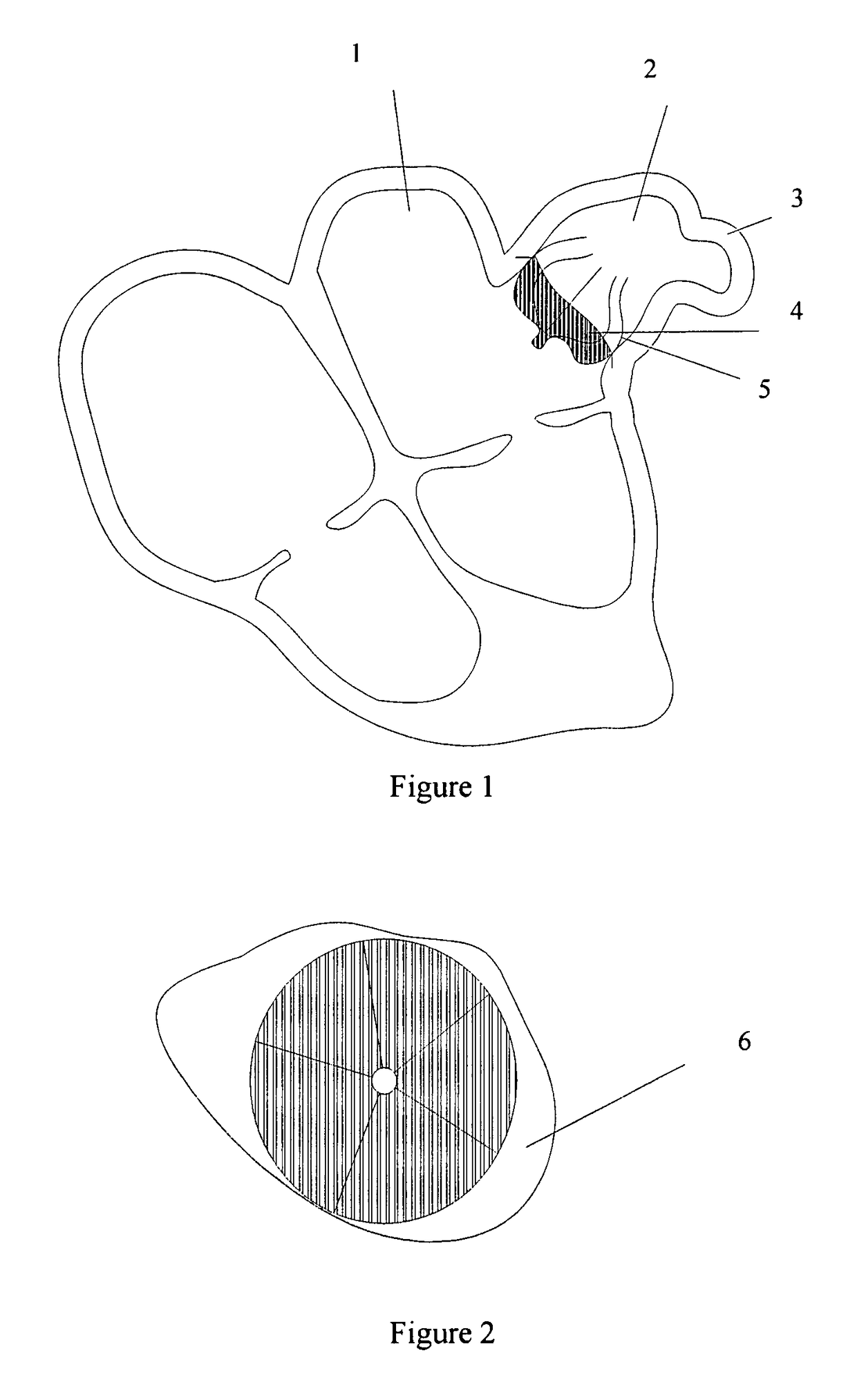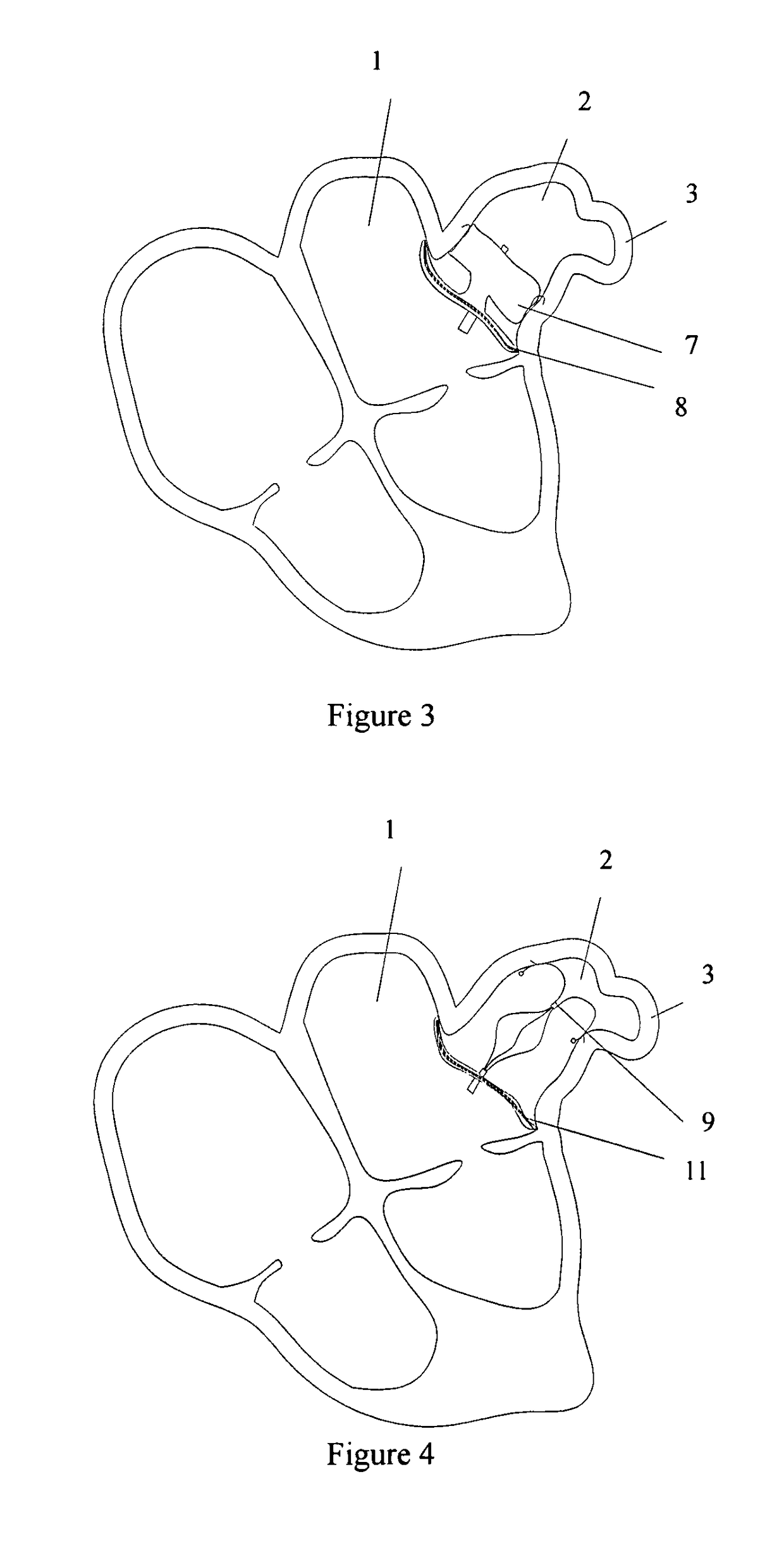Left atrial appendage occluder
a technology of appendage occluder and left atrial appendage, which is applied in the field of medical devices, can solve the problems of many limitations of the current left atrial appendage occluder, the deformation of the device, and the irregular shape of the entrance of the left atrial appendag
- Summary
- Abstract
- Description
- Claims
- Application Information
AI Technical Summary
Benefits of technology
Problems solved by technology
Method used
Image
Examples
first embodiment
[0067]As shown FIG. 6, FIG. 7 and FIG. 8, the left atrial appendage occluder 100 in the first embodiment of the invention comprises a closure disc 11 and a fixing frame 111 connected with the closure disc 11. Wherein, the fixing frame 111 comprises a plurality of interconnected struts 121. The fixing frame 111 is in a shape as shown in FIG. 6 formed by cutting a nickel titanium tube into a plurality of interconnected struts 121, stretching via a die and then heat treating for shaping. The closure disc 11 is made into a mesh grid 10 via nickel titanium wires by weaving, and then made into a disc shape by heat treatment. Two ends of the closure disc are fixed by sleeves. Then, the sleeve at one end is welded with a connecting member 15 with threads connected with a conveyor, while the other end of the closure disc 11 is a fixed end having its sleeve connected with a connector 16 on the fixing frame 111. Inside the closure disc 11, a flow blocking membrane (PTFE or PET membrane) is sut...
second embodiment
[0068]As shown in FIG. 9, FIG. 10 and FIG. 11, the left atrial appendage occluder 200 in the second embodiment of the invention comprises a closure disc 11 and a fixing frame 112 connected with the closure disc 11. The closure disc 11 is made into a mesh shape via nickel titanium wires by weaving, and then made into a disc shape by heat treatment. Two ends thereof are fixed by sleeves. The sleeve at one end is welded with a connecting member 15 with threads connected with a conveyor. Then, a flow blocking membrane (PTFE or PET membrane) is sutured inside the closure disc 11 via medical suture lines. The other end of the closure disc 11 is a fixed end. The sleeve of the fixed end is connected with a central end of the fixing frame 112. The central end comprises a flexible connector 17. The top view of the closure disc 11 is shown as FIG. 7 in the first embodiment. Struts 122 of the fixing frame 112 are formed by cutting nickel titanium tubes and heat treating them for shaping. During...
third embodiment
[0069]As shown in FIG. 12 to FIG. 15, the left atrial appendage occluder 300 in the third embodiment of the invention comprises a closure disc 11 and a fixing frame 113 connected with the closure disc 11. The closure disc 11 is made into a mesh shape via nickel titanium wires by weaving, and then made into a disc shape by heat treatment. Two ends thereof are fixed by sleeves. The sleeve at one end is welded with a connecting member 15 with threads connected with a conveyor. Then, a flow blocking membrane (PTFE or PET membrane) is sutured inside the closure disc 11 via medical suture lines. The other end of the closure disc 11 is a fixed end. The sleeve of the fixed end is connected with a central end of the fixing frame 113. The central end comprises a connecting spring 18. The top view of the closure disc 11 is shown as FIG. 7 in the first embodiment. Struts 123 of the fixing frame 113 are shaped by cutting and heat treating nickel titanium tubes. Tail ends of the struts 123 are ma...
PUM
 Login to View More
Login to View More Abstract
Description
Claims
Application Information
 Login to View More
Login to View More - R&D
- Intellectual Property
- Life Sciences
- Materials
- Tech Scout
- Unparalleled Data Quality
- Higher Quality Content
- 60% Fewer Hallucinations
Browse by: Latest US Patents, China's latest patents, Technical Efficacy Thesaurus, Application Domain, Technology Topic, Popular Technical Reports.
© 2025 PatSnap. All rights reserved.Legal|Privacy policy|Modern Slavery Act Transparency Statement|Sitemap|About US| Contact US: help@patsnap.com



